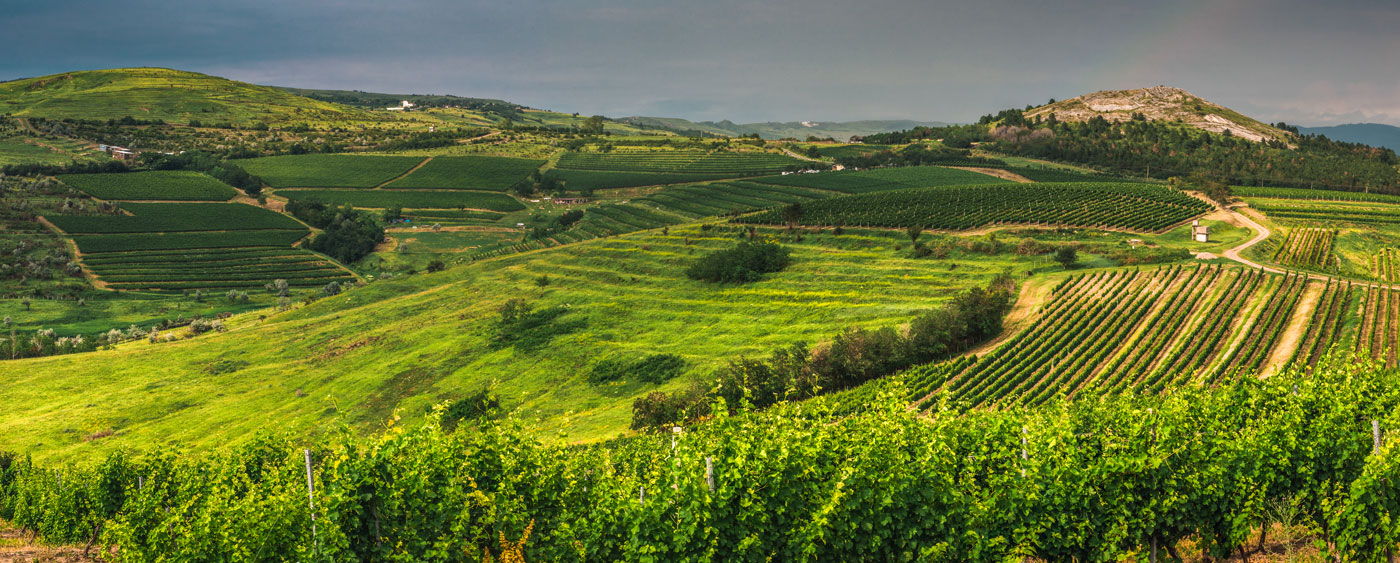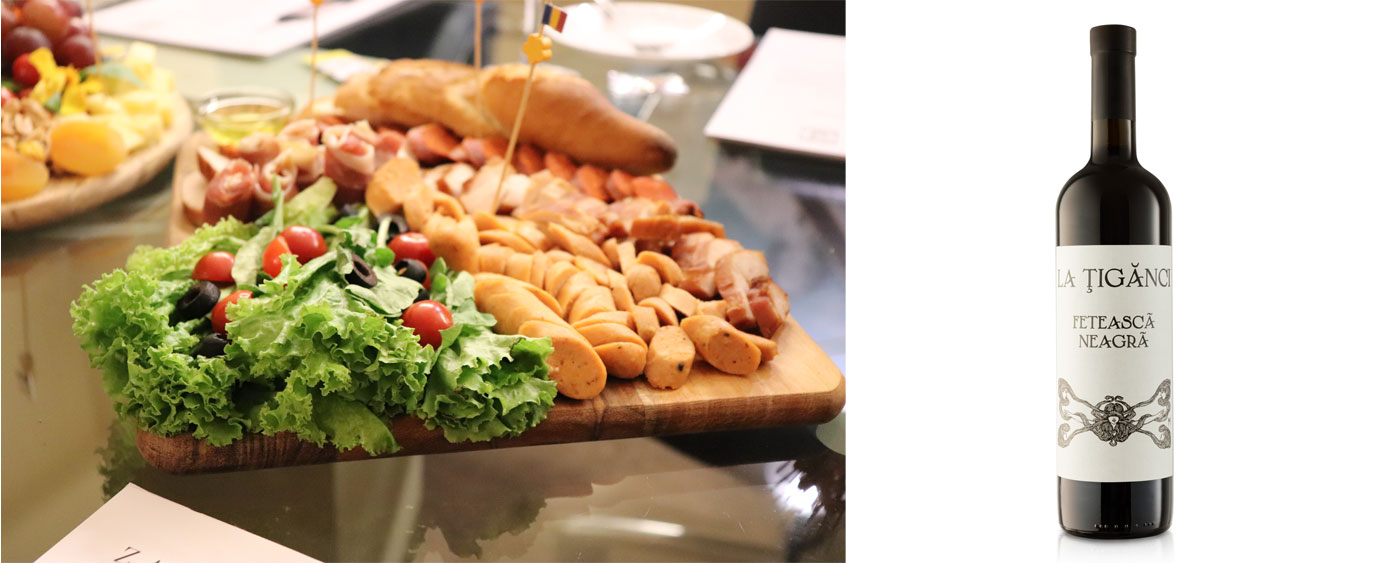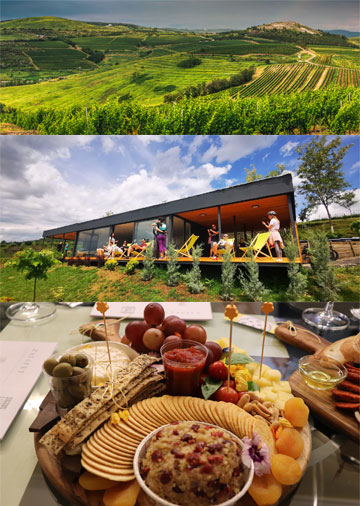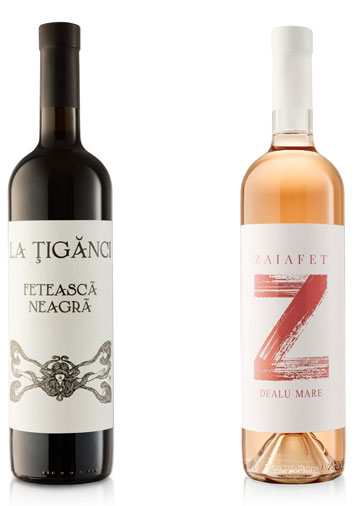
A Romanian Romance
- Spirits
- |
- 17 November 21
- Priya Kumari Rana
From indigenous grapes like the Fetească Neagră and the Fetească Regală, to the world-famous Cab Sauvigon, Merlot, Shiraz, and Chardonnay, boutique winery Velvet Winery in Romania’s Dealu Mare wine-making region is known to appeal to a hip, young generation. With its vibrant wine selection, and artistic labels, they are all about the here and now, and now they are ready to enchant India. We speak to the winery’s owner Tudorel Pilaf about his journey into winemaking, and what distinguishes his grapes – and wines – from the rest, as well as the Ambassador of Romania to India, Nepal, and Bangladesh, Her Excellency Ambassador Daniela Sezonov Țane.
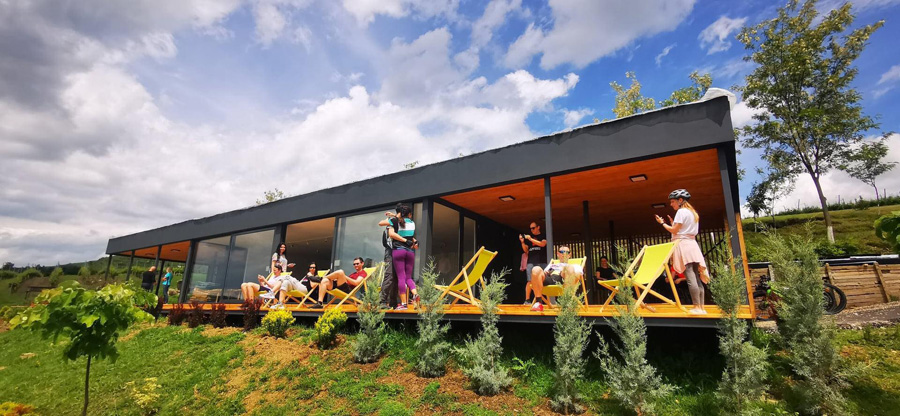 The Velvet Winery organizes special wine tours
The Velvet Winery organizes special wine tours
Dealu Mare, in the southern part of Romania, is an area known for its wine and home to around 38 registered wineries. The region is known for its red wines, in particular the local variety of grapes, the aromatic Fetească Neagră. We recently had the chance to do a wonderful wine tasting recently at Aska Beverages in New Delhi, where we met Mrs Pilaf – whose husband Tudorei Pilaf owns the Velvet Winery, a 36 hectare boutique winery in Tohani, that boasts of 10 grape varieties, from the local Romanian grape Fetească Neagră, Fetească Regală and Tămâioasă Românească, as well as international varieties: Cabernet Sauvignon, Merlot, Cabernet Franc, Shiraz, Chardonnay, Riesling Italian, and Muscat Ottonel.
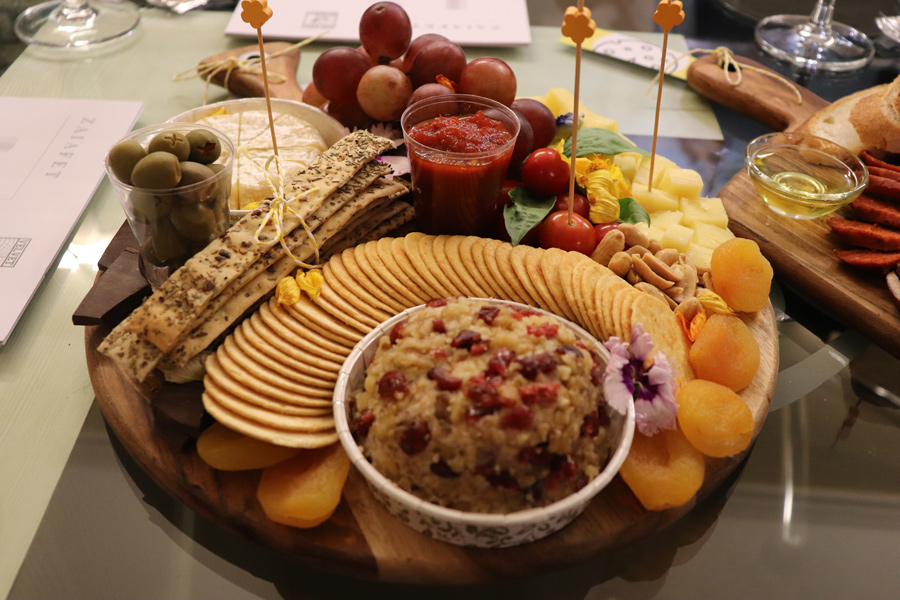 A cheese platter by Cha Cha Cheese
A cheese platter by Cha Cha Cheese 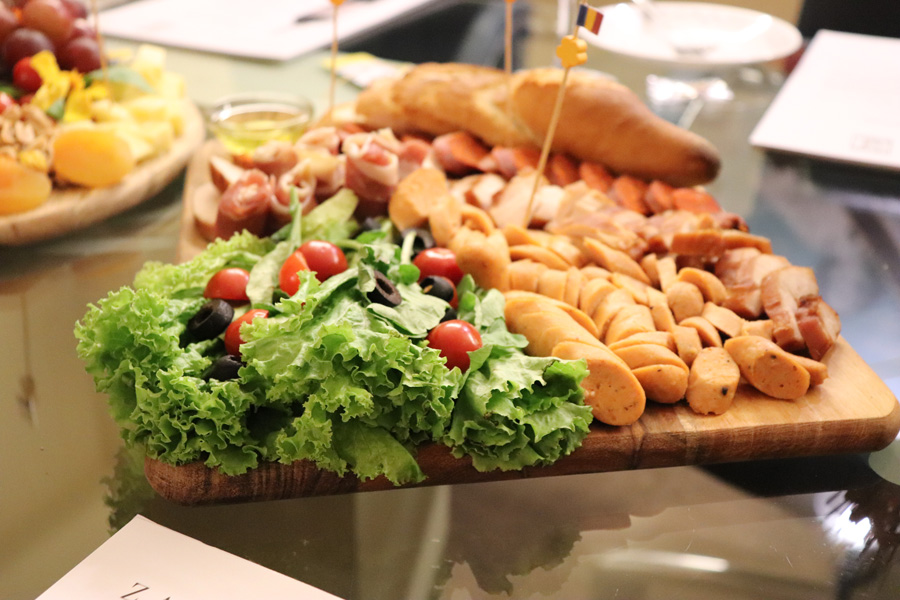 A charcuterie platter by Cha Cha Cheese
A charcuterie platter by Cha Cha Cheese
Over a tasting that included cheese and charcuterie platters from Cha Cha Cheese (founded by Naina Chopra Banaik), that included smoked cheese and brie, plus dried apricots, grapes, olives, and of course, charcuterie, we tasted a variety of stunning dry red and white wines from La Tiganci, Zaiafet, Nirvana lines, plus a wonderful rose and a dulcet sweet white muscat called Cabaret (with a bright Art Deco label).
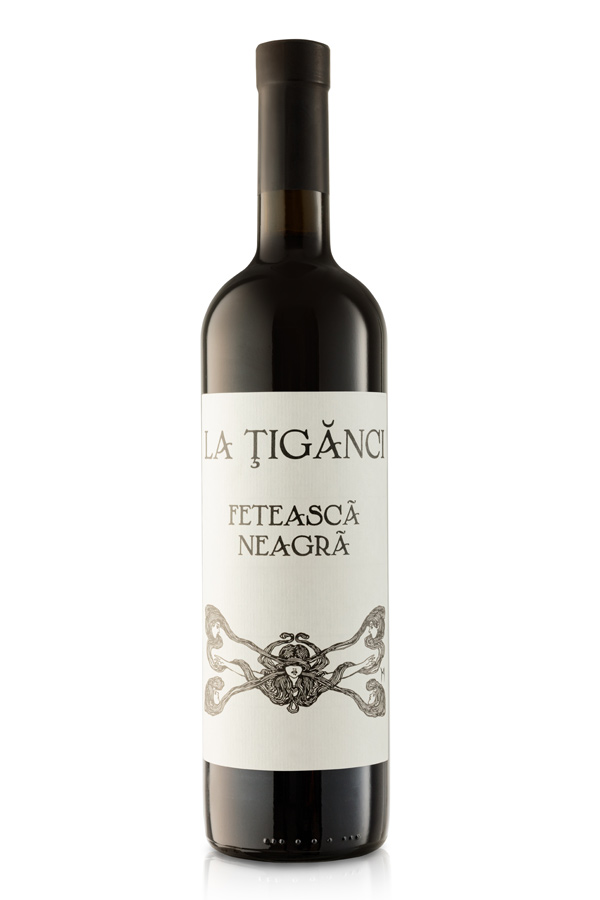 LA TIGANCI Feteasca Neagra
LA TIGANCI Feteasca Neagra
The Fetească Neagră from La Tiganci had aromas of plums, and cherries, along with notes of chocolate. To taste, it was full-bodied, with well-integrated tannins, and a finish of dark chocolate, cherry, and vanilla. The Nirvana Fetească Neagră was also very berry like in its aroma and taste, with fine tannins, and very pleasant, with a great mouthfeel.
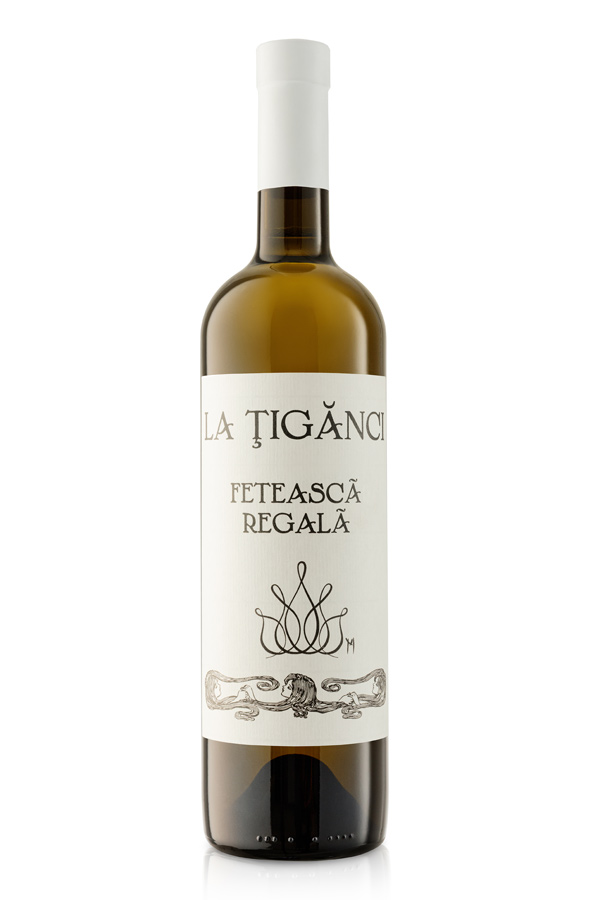 LA TIGANCI Feteasca Regala
LA TIGANCI Feteasca Regala
The La Tiganci Fetească Regală was very different from the Zaiafet Chardonnay – both white wines were dry, but the Fetească Regală was slightly less citrusy, and was very balanced and well-structured, while the Chardonnay was intense in its taste of apricots and citrus fruits.
-with-winemaker-Liviu-Grigorica.-Photo-by-Vinul.jpg) Velvet Winery founder Tudorel Pilaf (left) with winemaker Liviu Grigorica. Photo by Vinul.ro
Velvet Winery founder Tudorel Pilaf (left) with winemaker Liviu Grigorica. Photo by Vinul.ro
Priya Rana: Mr. Pilaf, what is it about the Dealu Mare region that makes it so perfect for growing wine?
Tudorel Pilaf: It’s in the pedo-climatic context. The Dealu Mare wine region benefits from the southern exposure of the slopes, the warm air brought by the currents from the Romanian Plain and the protection of the hills of the Southern Subcarpathians. The soil is clay-loam, with calcareous substrate contributing to the special character of this wine region.
PR: When did you found your winery, and what was it that made your family get into the wine business, since you belong to a different industry? Why the name Velvet Winery?
TP: As an agronomist I started my career in the Plant Nutrition and Plant Protection field, serving the B2B and B2C in Romanian agriculture for more than 20 years. Due to my professional life I also worked with vine growers and winemakers; step by step I became a wine lover and started travelling around the world to discover the vast domaine of the wine industry.
In 2015 we acquired a domain of 16.5 ha of vine placed in a natural amphitheatre – which was love at first sight! The wine bloggers, wine critics, and tourism agents say it’s the most spectacular vineyard landscape of Romania, known as little Tuscany!
In 2017 we expanded, acquiring an additional 19.5 ha that have been replanted with new red premium clone varieties. Our total domain measures 36 ha today.
Last year we built a brand-new cellar facility with a production capacity of 98.000 bottles, and in the next years, this number will go up to 300,000 bottles.
We chose the name Velvet Winery, because it’s a high resonance name, easy to understand, easy to recall and last but not least, my partner Liviu Grigorica, the prestigious winemaker, makes velvety wines!
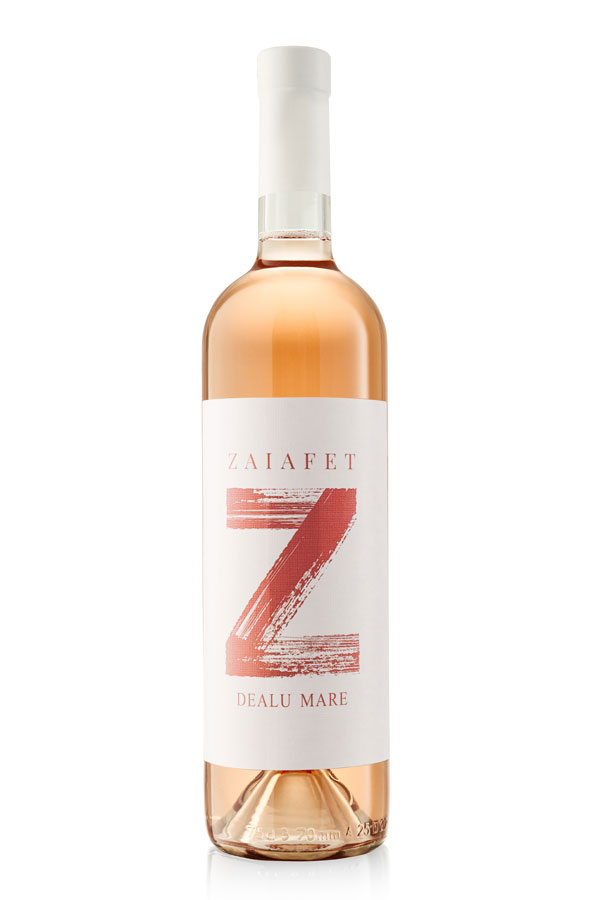 ZAIAFET Rose
ZAIAFET Rose
PR: I really liked the Zaiafet Rose, made from the Cab Sauvignon grape. Could you tell me a bit about it? What was the process making the rose, after fermentation etc.?
TP: For this wine, only must from the first press was used, after about half an hour of maceration. The controlled fermentation took place at a temperature of 12-14˚C. After finalizing the alcoholic fermentation, the wine was stabilized, conditioned, and bottled. The result is a refreshing and pleasant wine with good acidity and the aromas of berries, wrapped in citrus accents and spices.
PR: What is the difference between cultivating a grape that is not from there, like the Cabernet Sauvignon, as compared to the Romanian grape varieties – like the Fetească Neagră and the Fetească Regală?
TP: It’s always about teroir and typicity of diferent varieties, that’s the beauty of wine domains. The Cabernet Sauvignon is a very versatile variety, the most important is to meet the right pedo-climatic conditions. Fetească Neagră is makes a good blend with Cabernet Sauvignon and Merlot, therefore we have today as called 'Dealu Mare Blend’.
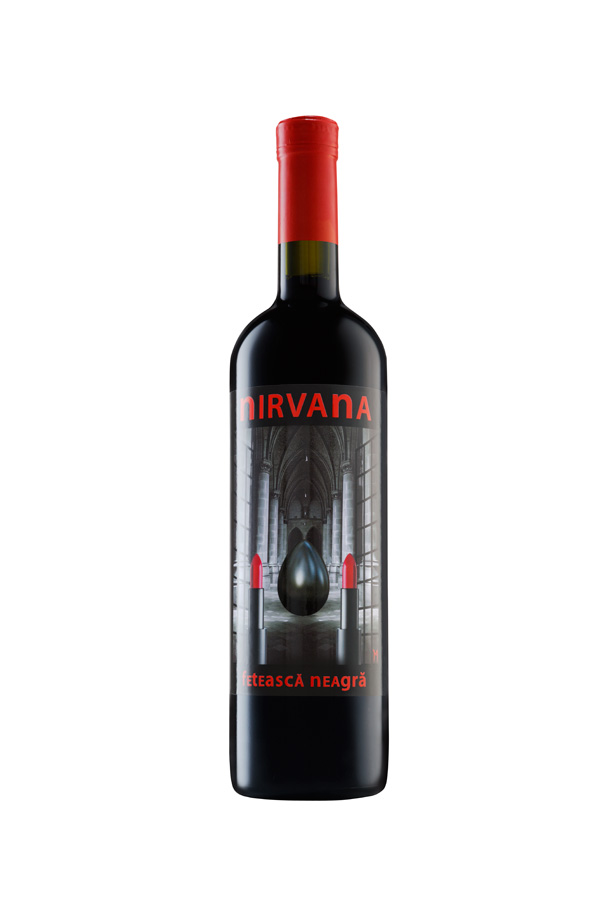 NIRVANA Feteasca Neagra
NIRVANA Feteasca Neagra
PR: What is the particular quality of these Romanian grapes?
TP: Fetească Neagră: It is considered to make some of the top red Romanian wines. Depending of the wine-making techniques, the wines get various flavors and fine tannins, good acidity, medium to full body and medium to high alcohol level. It is typical to have aromas of dried plums, blackberries and black blueberries along with nice black pepper, vanilla and coffee flavors and for the old wines toast and skin senses.
Fetească Regală: This offers a wide range of styles of wines, starting from light to medium-bodied wines if vinified in stainless-steel tanks, to full-bodied versions if aged in barrels, wines with an intense aroma and great ageing potential. It is typical to have flavours of wildflowers and fruit such as dried apricots, or almonds, especially for wine-aged in barrels.
PR: Both these wines – the Fetească Neagră and the Fetească Regală (white) from La Tiganzi line – are sensational, Have these wines been appreciated internationally?
TP: Well, when you travel, most important is to discover the local attractions, local people, traditions, local food and of course if you are a wine lover, the local wines.
This spring we have opened our tasting room; we have got over 2,000 visitors. The most asked, by both Romanians and foreigners, are local varieties.
PR: How different is the Nirvana made from the Fetească Neagră to the La Tiganci Fetească Neagră – in terms of process and maturation – is there any huge difference between the two as the tastes are very different!
TP: The Nirvana Fetească Neagră is a fresh medium-light body red wine, easy to understand, with soft tannins well integrated into an elegant structure. After finalizing the malolactic fermentation, the wine was stabilized, conditioned, and bottled. It has no oak maturation, to maintain the freshness of the fruit. On the other side, La Tiganci Fetească Neagră is a gastronomic wine, more complex, full-bodied with with much more extractivity. After finalizing the malolactic fermentation, the wine was aged for six months in French oak barrels at first and second use.
Both of them express, in different styles, the grape typicity of Fetească Neagră and the terroir of the Dealu Mare wine region.
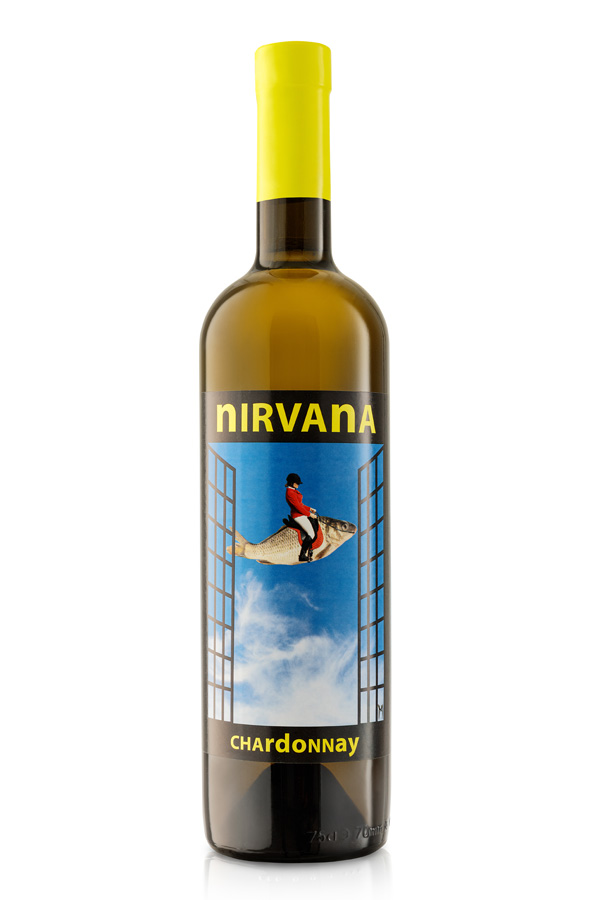 Nirvana Chardonnay
Nirvana Chardonnay
PR: Can you tell me if these wines are matured in stainless-steel casks after fermentation, or in wooden casks?
TP: After fermentation, Nirvana Fetească Neagră was maturated in stainless-steel tanks and La Tiganci Fetească Neagră was matured in French oak barrels at first and second use, for six months.
PR: The Zaiafet line features the Cabernet Sauvignon – what do you love about this grape, and is it popular in Romania?
TP: Cabernet Sauvignon is very popular in our country and specially in Dealu Mare. Here we are on the same paralel 45, just like Bordeaux and Tuscany, so the climatic conditions for obtaining high quality red wines are excellent.
PR: Your brand is very youthful - is it aimed at young Romanians? Is it doing well internationally?
TP: Our brand addresses all wine consumers that appreciate a good product. Depending on the style and taste, our portfolio contains both easy-to-drink wines, created especially for the young consumer, but also complex, full bodied wines for wine connoisseurs and enthusiasts.
Being a new winery we are building our market both HORECA and IKA, already listed in one of the biggest supermarkets network, Carrefour, as well as in approximately 50 restaurants. Internationally, we are establishing partnerships in Germany, UK, USA, Singapore and last but not least, in India.
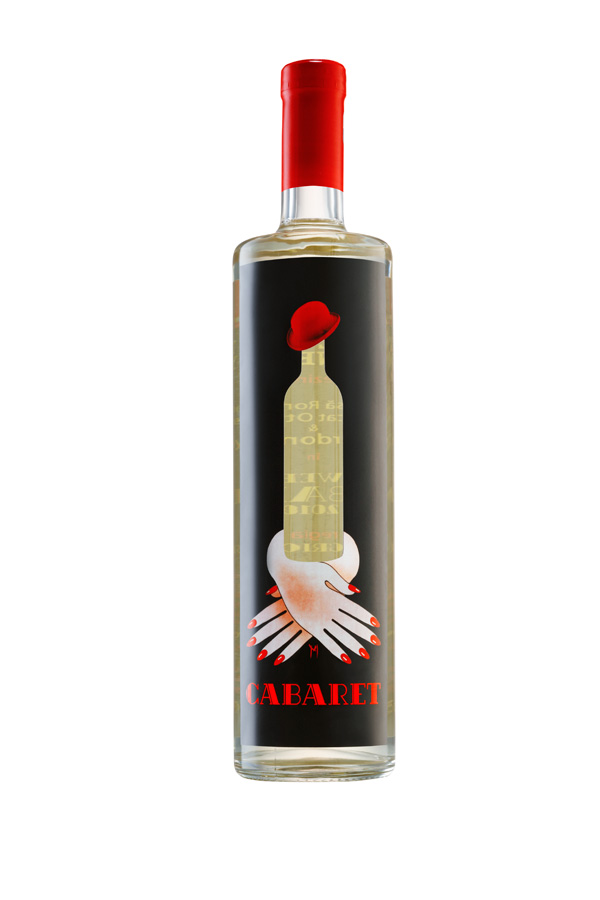 Cabaret
Cabaret
PR: The Muscato wine – the Cabaret – is very special, as it’s a dessert wine. What do you best like to pair it with?
TP: We recommend to be paired with foie gras, tarts, or other sweet pastries.
PR: How many grams of sugar does it have?
TP: It has 60 gm of residual sugar, and good acidity, which integrates with the alcohol in a balanced way.
PR: I love your Art Deco labels! Who designs them, and why Art Deco as a theme?
TP: The entire company’s concept has been designed by a well-known Romanian wine PR maven, George Moisescu, who has designed other successful wine labels in Romania.
It’s inspired by the Art Decoratif current, which made a lot of noise among the Conservatives in 1927 at the first Art Deco exhibition in Paris. As the Company logo is to break barriers, which could be interpreted back to the famous Pink Floyd hit ‘The Wall’, the concept is about Wine and Art.
PR: Do you think your wines will do well in India?
TP: We are very confident that the wine consumers form India will appreciate the special characteristics and style of our wines, due to their high quality and friendly character.
PR: Your Excellency, do you hope to see more exchanges in wines and spirits between our two countries?
H.E. Ambassador Daniela Sezonov Țane: I certainly do, since we have many Romanian wines of excellent quality which are decently priced. I see two problems for any kind of wine import: the very high taxes levered by the Indian authorities, which force the producers to bring lower quality wines which are sold at much highest prices than in Europe, and the very hot climate in India. For at least seven months a year the wines need to be kept at controled temperature during transport and storage. Those conditions are also increasing the price. So, unless there is a miracolous drop in taxes, the wines imported for middle-income users will be expensive and of average quality. We can also think to import only high-quality wines, but this will be available for a restricted market.
PR: What is it about Romanian wines that Indians will find so appealing?
H.E. Amb. Țane: Good quality, a very big diversity, and not the least, reasonable export prices.
PR: Why is Romania such a must visit for Indians – what else can we learn about the wines and food there?
H.E. Amb. Țane: Romanian are, like Indians, fun-loving people, we enjoy music and dance. We have much more in comon then one could think of at first sight. The food occupies a special place in our culture; we love eating, especially during festive periods, like Christmas and Easter. Wine has a very old history in Romania, being produced since at least two millenia. A trip to Romania, specially if the travellers choose agro-tourism, will be a gastronimic trip, each region having its own traditional recipes. Of course, like in the rest of Europe, we are very found of pork and beef. So for the vegetarian or traditional Indian non-vegetarian, the number of dishes will be drastically reduced. Nevertheless, we have delicious dishes with fish, chicken, turkey (which I have not seen at all in India), and duck. There are several wine routes in the country, which will offer the traveller a very diverse natural landscape and a glimpse of our traditional hospitality. The wines can be enjoyed with a big variety of Romanian cheese, home-baked bread, and sausages. From a landscape point of view, we could say we are India in miniature, with all landforms, from sea, delta, plains, hills and snow-capped rocky mountains.
FOLLOW US ON INSTAGRAM

Lifestyle Insider is a kind of junction point, connecting people with diverse interests that touch on the more luxurious aspects of lifestyle – fashion, design, travel, food and spirits, art, watches and jewellery, cars, yachts, and aviation, and technology. People today don’t fit into boxes and categories. In our individual ways, we are interested in diverse themes, products, and the challenges that face our world today. You will judge how well this effort of mine caters to your passions and proclivities.
Lifestyle Insider is a showcase of all that is beautiful and luxe. Behind every creation, is a designer, chef, entrepreneur, or a design maison. I have delved into my own appreciation for objetsde luxe that I have admired over the years – be it a love of fashion from the world’s top Parisian and Italian fashion maisons and their ’90s muses, or the care that goes into sari and Indian textile collections in my own family. Growing up on four continents, as the daughter of a former Indian Ambassador, I’ve seen a remarkable array of historic places and met a myriad people. My aim is to bring my world view into this website, a curation of what I find particularly stunning, unique, and newsworthy.
It’s an exciting time for brands all over the world. With change comes opportunity. With the global ‘reset’ and uncertainty on many fronts, there is a chance to write a new script. Let’s be those pioneers.
A bit about me:
A luxury and fashion journalist with 25 years of experience in publishing and magazine journalism, I have edited some of India’s top fashion and luxury magazines. I got my BA in Comparative Literature from UC Berkeley, and went on to receive my Master’s in English and French from the University of Strasbourg, France. I have also studied German and Film. I live in Gurugram, India, and look forward to once again exploring our world with a new-found freedom.
Priya Kumari Rana
Founder and EditorContact Us
Mail us @ lifestyleinsiderindia@gmail.com
